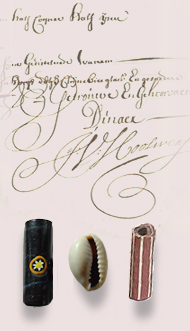
The exhibition is open from
till august 2010, Thrursday till Sunday from 13.00-17.00 hour
NiNsee, Linnaeusstraat 35-F
(across the Tropenmuseum and the Oosterpark) in Amsterdam.
Take trolley nr 9 or bus 22 from Amsterdam Central and get out at 1e van Swindenstraat
€2,50 / Stadpas, Pas 65 Plus, CJP €1,50
Contact the department Research NiNsee. Telephone
++31(0)20 568 8568 or
++31(0)20 5682081 a.bijnaar@ninsee.nl
 Child in Chain brings attention to the issue of children in slavery, then and now. Visit this special exhibition at NiNsee, the National Institute for the Study of Dutch Slavery and its Legacy.
Child in Chain brings attention to the issue of children in slavery, then and now. Visit this special exhibition at NiNsee, the National Institute for the Study of Dutch Slavery and its Legacy.
To be sold and then spend a life in captivity, full of violence, hunger, exhaustion, and contempt. How would you survive? Immerse yourself in the personal stories of children in slavery. Become inspired to do something against modern slavery.
Then and Now
The exhibition Child in Chains tells the story of children in slavery in the past and in the present.
It is important to pay attention to the history of slavery as what happens in the past, affects the future. The Trans Atlantic slave trade was coupled with racist ideology and ideas about Africans that colonial powers used to justify slavery. These ideas continue to exist in the forms of racism, stereotypes and discrimination. The legacy of slavery is real.
We have chosen to focus on the West for the slavery of the past, as it has only recently become known that there was also a big slave trade in the East.




In our examination of modern slavery, we look at child slavery throughout the entire world. Unfortunately, despite all the laws that prohibit it, there is still a great deal of slavery in the world today.
Stories from the time of slavery, objects, documents, drawings, songs, dioramas and a comicstrip give us a picture of the enslaved children from the past.
The Dutch, between 1550 and 1850, shipped one hundred thousand children from West Africa to the Americas. They were sold in Suriname and the Dutch Antilles. In these colonies, children were also born. They grew up in slavery. This exhibition is about these children.
Presently it is illegal to buy or sell a child. To keep someone in slavery is also a crime. Therefore, we don’t know exactly how many children there are in slavery. There are at least one million and every single one is one too many.
Child on the Chain is a touching exhibition. Bring a child and immerse yourself in the life stories of enslaved children. Bring your grandfather, grandmother, friends, father or mother along and learn about the past and the present.


